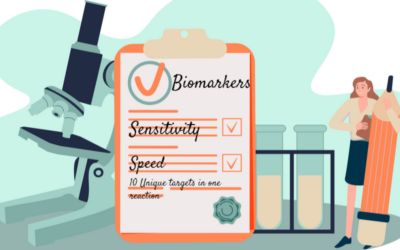PROteolysis TArgeting Chimera, the novel therapeutic modalities better known as PROTACs*, first emerged in 2001 but are just starting to emerge from clinical trials. Their unique structure and capabilities have excited drug developers; however, there are still...
Technical Expertise
A Guide to In Vitro ADME Testing in Drug Development
Understanding the Absorption, Distribution, Metabolism and Excretion (ADME) properties of a compound is critical to drug discovery and development. In this short guide, we look at how in vitro ADME testing works and why it is important. To understand in vitro ADME...
Maximizing the Efficiency of Ocular Gene Therapies
Gene therapy is an exciting—and relatively new—area of medicine. Treatments were first introduced in the 1970s, but after decades of methodology challenges and scientific frustration, the concept of altering genes to address “untreatable” viruses and diseases gained...
Preparing Drug Developers for Developmental and Reproductive (DART) Studies
In 1993, the International Council for Harmonization of Technical Requirements for Pharmaceuticals for Human Use (ICH) published guidance entitled “S5 Detection of Toxicity to Reproduction for Medicinal Products.” The U.S. FDA interpreted the ICH guidance and...
WuXi AppTec Expands Toxicology Footprint, Capabilities with New Chengdu Facility
A new 108,000-square-foot testing facility in Chengdu, China, will allow WuXi AppTec to help meet high global demand for toxicology testing in preclinical studies. The facility significantly expands WuXi AppTec’s testing capacity at a time when many customers’...
Simoa Joint Laboratory Delivering Greater Speed, Sensitivity and Customization in Biomarker Validation
For more than 20 years, WuXi AppTec has been a leader in developing and validating biomarker methods to support drug development and clinical research. It has used cutting-edge technology to validate hundreds of biomarkers on most major platforms with the aim of...
In The News: WuXi AppTec Experts in the Drug Development Community (Aug-Dec 2021)
WuXi AppTec Laboratory Testing Division experts continually weigh in on emerging trends and stay updated on salient drug development topics. Here is a rundown of the industry publications featuring WuXi AppTec experts in the second half of 2021. 1. Genetic Engineering...
Q&A: How Preclinical Toxicology Contributes to Successful IND Applications
Preclinical toxicology testing on new molecules is essential. Researchers use toxicity tests to identify specific adverse effects related to cancer, cardiotoxicity and skin/eye irritation and sensitization. These in vitro and in vivo studies combine with accidental...
The Vital Role Of Toxicity Studies In Evaluating New Drugs
The evaluation of toxicity in a new drug is a very thorough process, so that by the end of the testing, scientists will have compiled all the necessary data to understand the full safety profile of the potential new drug. During that nonclinical evaluation, there are...
Navigating 505(b)(1), 505(b)(2) and 505(j) Drug Approval Pathways
Introducing new drug candidates to preclinical testing is a complex and time-consuming endeavor. It can cost developers more than $1 billion and take a decade to bring a new drug to market. Success rates vary depending on therapeutic area, but a recent study from MIT...
The Complex Process of Developing a Living Protocol
There are times in the laboratory when experienced scientists may question the direction in a protocol. Their experience, having worked on so many studies, may tempt them to consider conducting the testing a little differently than the directions provided to them. If...
How Bioanalytical Laboratory Automation Improves Timelines and Accuracy
It is challenging to find a fully automated bioanalytical laboratory, but doing so can help drug developers stay competitive in today’s market. A fully automated laboratory can perform controlled and error-free assays, dramatically improving the accuracy and...











